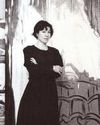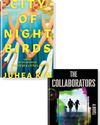
Margot Robbie wasn’t a Barbie fanatic as a child. She’s not even sure she owned a Barbie. “I don’t think I did,” she tells me one morning over breakfast in Venice Beach. “I know my cousin had a bunch of Barbies, and I’d go to her house.” Growing up on Australia’s Gold Coast, Robbie spent a lot of time outside. She and her cousin would make mud pies. They’d play with trucks. And they’d play with Barbies. Mostly they ’d build forts, “cubbies” to an Australian. “Building cubbies was what we did all day, every day.”
We are a couple of blocks from the Venice boardwalk, at Great White, an Australian-owned restaurant, and I have asked Robbie what compelled her to produce and star in a liveaction Barbie movie, due out this July. “It wasn’t that I ever wanted to play Barbie, or dreamt of being Barbie, or anything like that,” the 32-year-old actor says. “This is going to sound stupid, but I really didn’t even think about playing Barbie until years into developing the project.”
It doesn’t sound stupid but it does seem counterintuitive, the notion that Robbie, whose breakout role in The Wolf of Wall Street was described in that movie’s script as “the hottest blonde ever,” was not envisioning herself in the role of Barbie when she sought the film rights from Mattel. And yet the person sitting across the table is not giving blonde bombshell. Not in a conventional sense, anyway.
Diese Geschichte stammt aus der Summer 2023-Ausgabe von Vogue US.
Starten Sie Ihre 7-tägige kostenlose Testversion von Magzter GOLD, um auf Tausende kuratierte Premium-Storys sowie über 8.000 Zeitschriften und Zeitungen zuzugreifen.
Bereits Abonnent ? Anmelden
Diese Geschichte stammt aus der Summer 2023-Ausgabe von Vogue US.
Starten Sie Ihre 7-tägige kostenlose Testversion von Magzter GOLD, um auf Tausende kuratierte Premium-Storys sowie über 8.000 Zeitschriften und Zeitungen zuzugreifen.
Bereits Abonnent? Anmelden

Canvas the City - Martha Diamond captured the brisk energy of Manhattan.
How do you capture a city as frenetic as New York? For the late artist Martha Diamond, it meant looking up. In her soulful paintings of New York City’s skyscrapers, Diamond used loose ropes of color that land somewhere between abstraction and figuration. Though sparse in detail, her buildings teem, as the city does, with life. Diamond made most of her paintings in her loft on the Bowery, where she lived from 1969 until her death last December, at age 79. Throughout her five-decade career, she didn’t so much re-create what she saw as channel its slippery essence. “I know the city has straight lines or edges,” she said in 1989, “but as I walk around, the ending or beginning of substance becomes less absolute.” Her buildings sway in the wind and glisten in the light. “I think her work is still startling,” says poet Eileen Myles, who was a longtime friend of Diamond’s. “It’s there to wake people up.”

Off the Beat - Mainly known as a producer, O'Connell Finneas is releasing a new heartfelt LP.
Finneas O’Connell likes to disappear. A tendency toward self-effacement may seem like an unexpected character trait for the youngest person ever to win a Producer of the Year Grammy, a prize that has pride of place in Finneas’s living room, alongside the other nine he’s earned for his work with his sister, Billie Eilish. But seated at the dining table in his LA home, the 27-year-old musician elaborates. “When you hear a song and you’re like, ‘Wow, who made this?’ That’s what I’m trying to do when I write,” he says. “He can really tap into the other person,” says frequent collaborator Ashe, née Ashlyn Rae Willson. “He is a phenomenal listener.”

Spinning a Web - Not muscle, not bone, but fascia the network of tissue that connects it all is grabbing the therapeutic spotlight.
Are you in pain?” Cadence Dubus, a Brooklyn-based fitness instructor who has developed a program for “fascia release,” asks, sending me spiraling before our session begins. There’s that twinge in my shoulder and the carpal tunnel at night—but aren’t such annoyances simply the conditions of modern life, of getting older? “Some,” I answer, shy to cop to any of it. Dubus then has me walk back and forth, squinting at my gait.

Nothing Like Her - Billie Eilish was adored by millions before she fully understood who she was. Now, as she sets out on tour without her family for the first time, she is finally getting to know herself.
It was late in the summer in Los Angeles, with all the dry heat and burnished sunlight that implies, and Billie Eilish was sitting in a dark room, busy changing her mind. The singer was halfway through editing the music video she had directed for “Birds of a Feather,” her latest astronomically successful hit song (nearly 1 billion streams) off her latest astronomically successful hit album (nearly 4 billion streams at the time), when she encountered a problem: She realized she hated it. Well, not hated. “I was like, this ain’t it,” she says.

Coming Up Rosy - The new blush isn't just for the cheek. Coco Mellors feels the flush.
If the eyes are the window to the soul, then our cheeks are the back door. What other part of the body so readily reveals our hidden emotions? Embarrassment, exuberance, delight, desire, all instantly communicated with a rush of blood. It's no wonder that blush has been a mainstay of makeup bags for decades: Ancient Egyptians used ground ochre to heighten their color; Queen Elizabeth I dabbed her cheeks with red dye and mercuric sulfide (which, combined with the vinegar and lead concoction she used to achieve her ivory pallor, is believed to have given her blood poisoning); flappers applied blush in dramatic circles to achieve a doll-like complexion, even adding it to their knees to draw attention to their shorter hemlines

Different Stages
A trio of novels spirits you far away.

The Wizard
Paul Tazewell’s costumes for the film adaptation of Wicked conjure their own kind of magic.

THE SEA, THE SEA
A story of survival on a whaling ship sets sail on Broadway. Robert Sullivan meets the crew behind the rousing folk musical Swept Away.

STAGING A COMEBACK
Harlem's National Black Theatre has been a storied arts institution in need of support. A soaring new home is shaping its future.

Simon Says
Simon Porte Jacquemus, much like his label, resonates with the sunny, breezy French South-but behind the good life, as Nathan Heller discovers, is a laser focus and a shoulder-to-the-wheel work ethic.